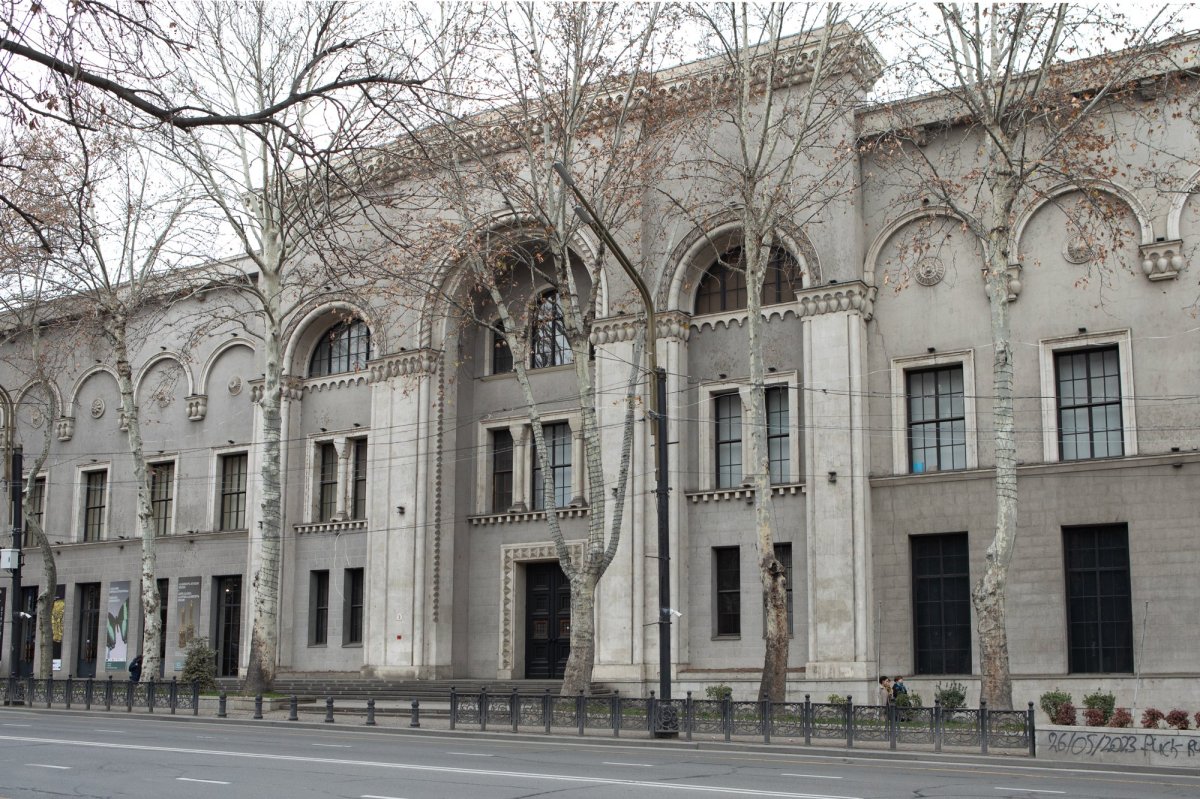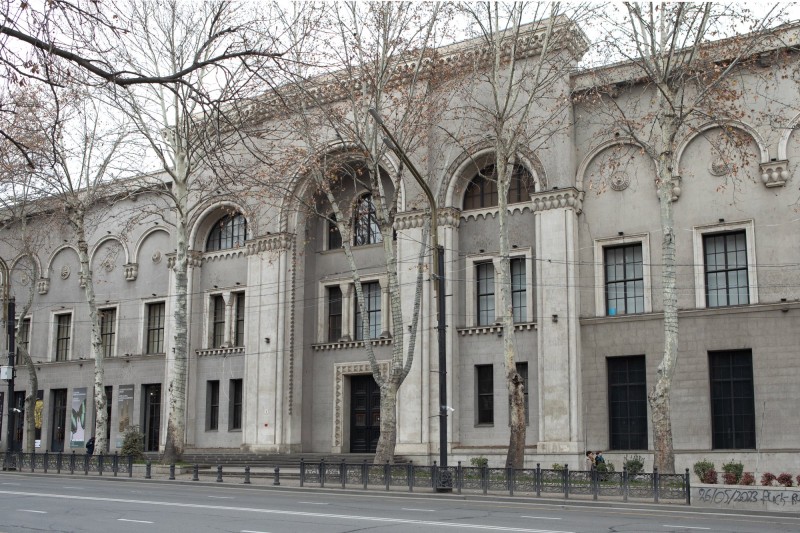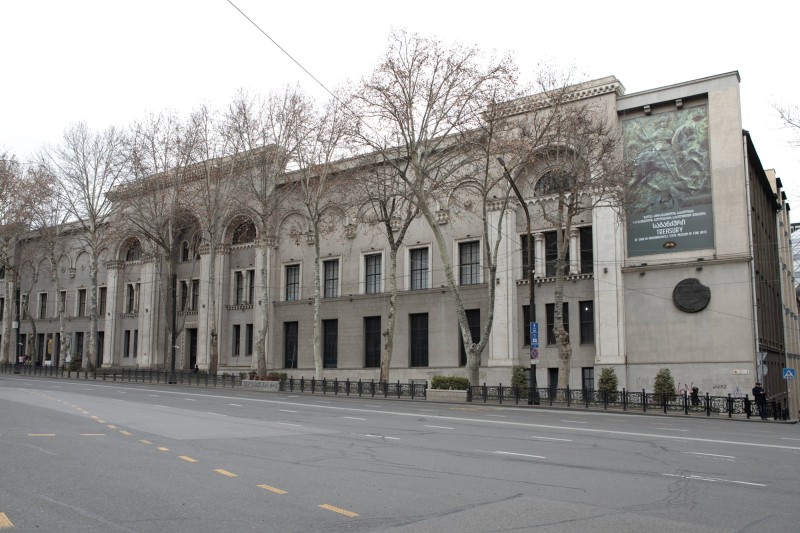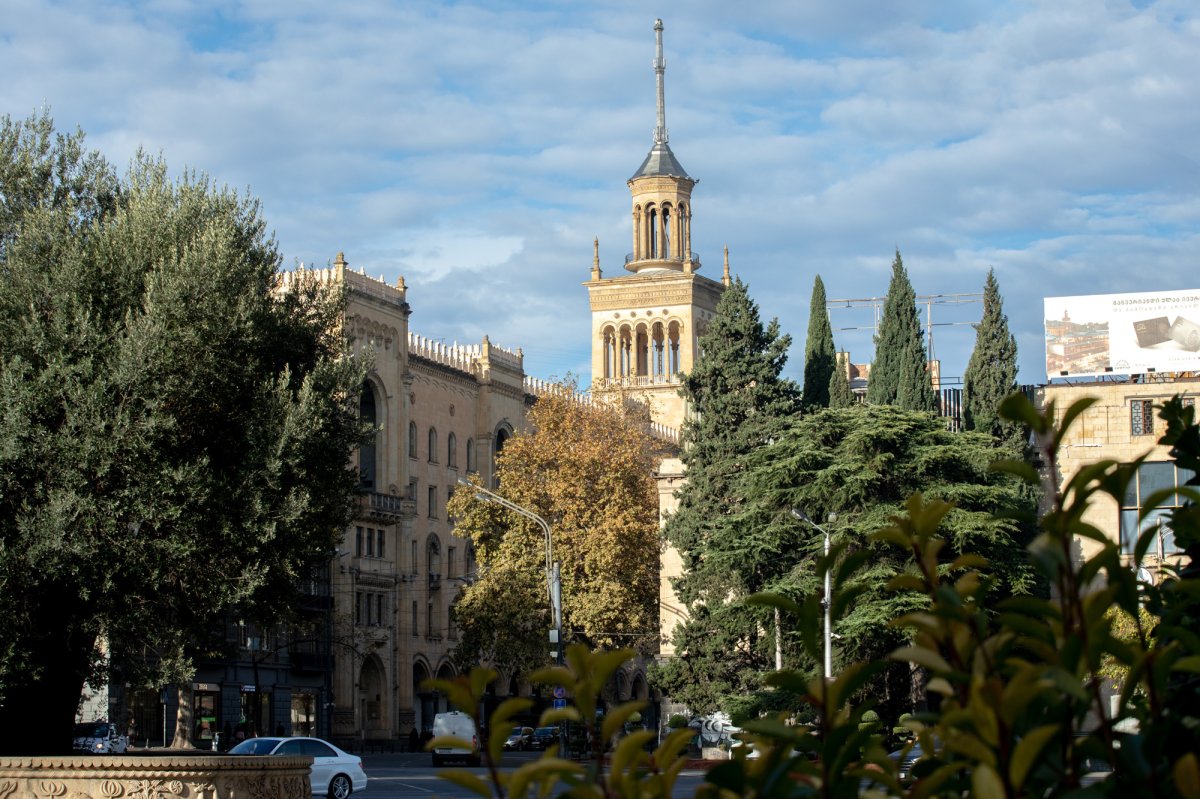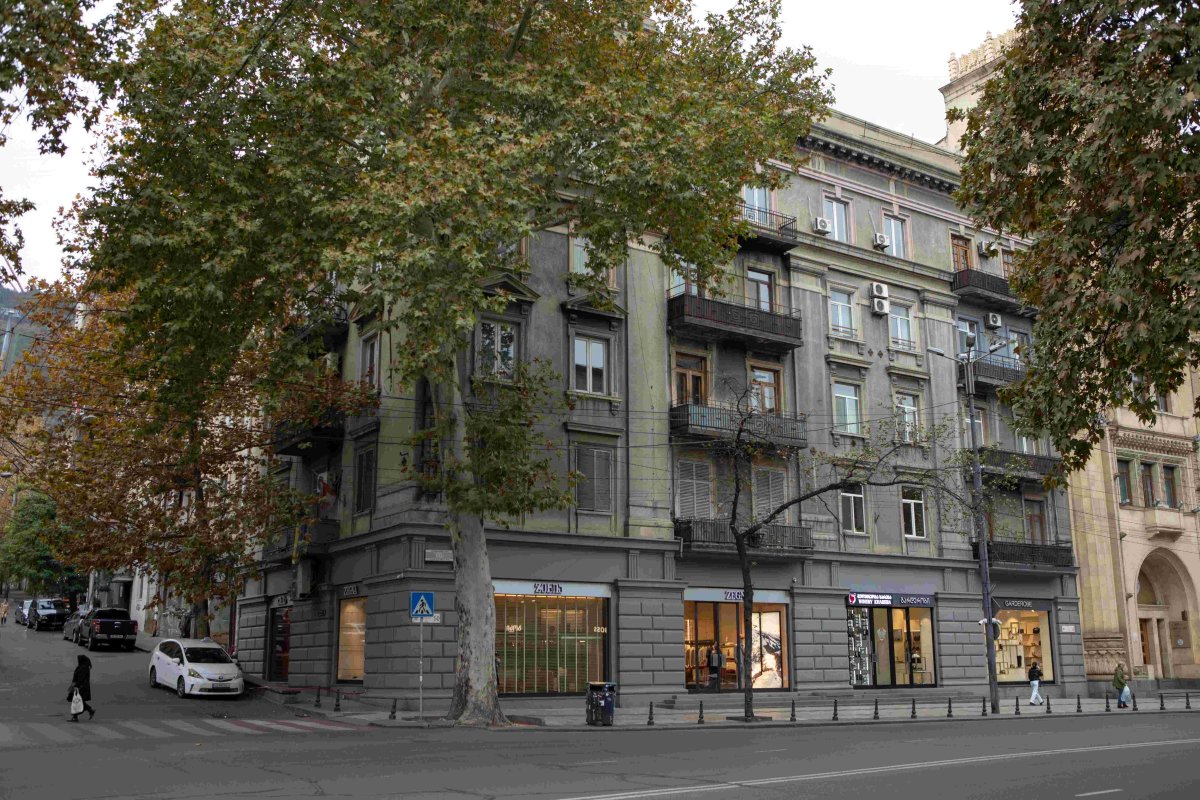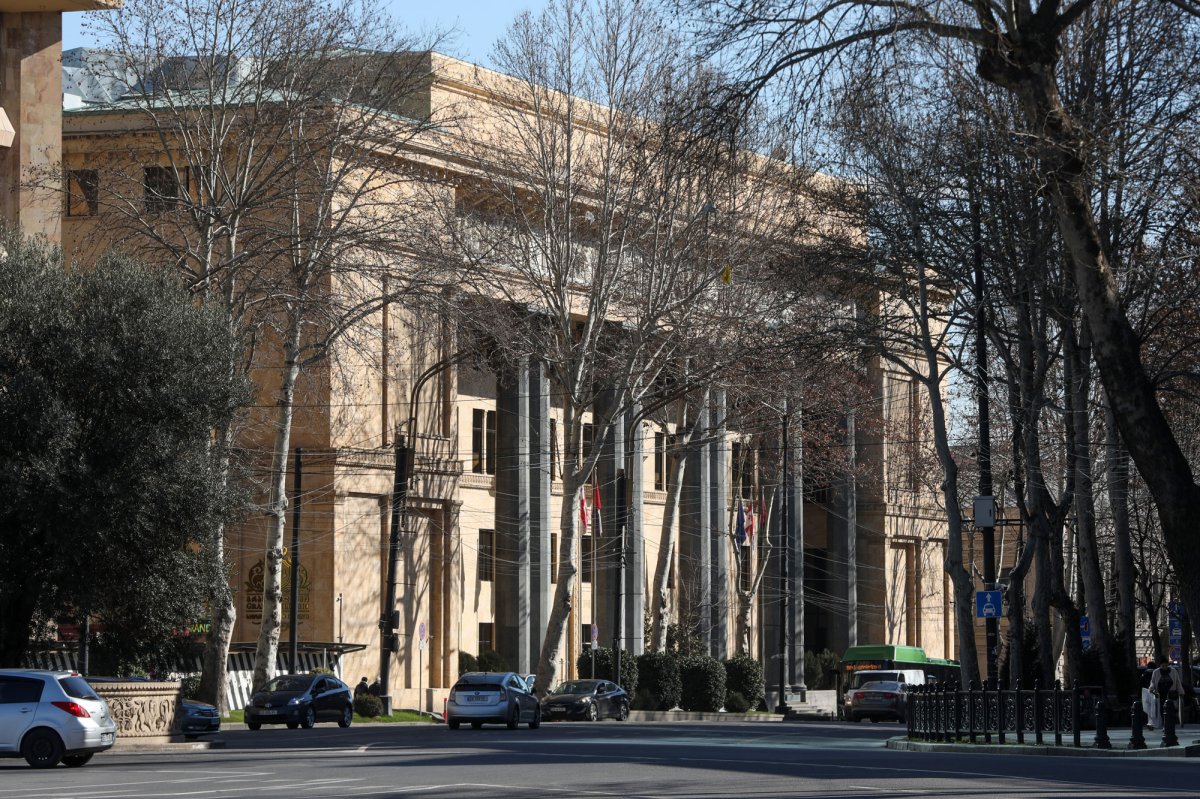
Information in details
რუსთაველის გამზ. 3/10-ში მდებარე პირველი კლასიკური გიმნაზიის მშენებლობა, როგორც საარქივო მასალებიდან ვგებულობთ 1830-იან წლებში დაწყებულა. შენობას რეკონსტრუქცია არაერთგზის ჩაუტარდა. პირველი საფუძვლიანი რეკონსტრუქცია, 1860-1861 წლებში არქიტექტორ ეფიანჯევმა ჩაატარა, ოდნავ მოგვიანებით კი 1870-1873 წლებში გერმანელი არქიტექტორის ოტო იაკობ სიმონსონის მიერ განხორციელდა. სწორედ ამ დროს მიიღო შენობამ კლასიცისტურ - ნეობაროკული საThe National Museum located at 3/10, Rustaveli Ave. (today's Simon Janashia State Museum) - the National Museum of Georgia was created on the basis of the Caucasus Museum. The building of the Caucasus Museum was built in the 1860s by A. Salzman's project. Later building was reconstructed by the project of L. Bilferd, however, despite the expansion, the museum could not accommodate the exhibits and funds, and therefore it was decided to build a large-scale full-fledged museum here.
The local government decided to build a large museum building, a competition was announced in 1910, as a result of which A. Tatishev's project was announced as a winner.
According to the project, the building of the new museum was decided in the "Islamic" or, as it was called at the time, "Moorish style", where the famous motifs of Islamic architecture were used - mosque portals with pointed arches and minarets, stalactite friezes and colored glazed tiles, which were to decorate the main facade. The author of the building project is architect Kornel Tatishchev. The mentioned project was approved by the Vice Roy on November 12, 1910. The construction started in the fall of 1911 and ended in August 1912. Although the project of architect K. Tatishchev was approved, the construction started with the project of architect M. Neprintsev. In September 1912, the architect K. Tatishchev, who was also the builder of the new building of the museum, resigned from his position due to disagreements with the special construction commission. In this regard, the construction commission invited Tbilisi architect Alexander Rogoiski (? - 1912), to build the museum, but who unfortunately died in the same year. The commission chose architect M. Neprintsev instead. The latter was commissioned to redo the original project plan in the part of the building that ran on the side of Nicholas Lane. Also, remodeling of the main facade, also in the "Oriental" style, but using motifs of Persian architecture.
Thus, the main facade of the museum, which was "Moorish style", was replaced with a new one, but also with an "oriental style" facade, where elements and details of late Iranian architecture were used. At the end of 1912, this project was already drawn up and approved. By the summer of 1914, the walls of the museum building were mostly removed, but the outbreak of the First World War delayed its construction. Funding has been reduced. Work was progressing at a slow pace to complete the construction of the flat roof and to arrange the lanterns for the upper lighting of the exhibition halls on the third floor, etc. At the beginning of 1917, the construction was completely stopped. By this time, the main volume of the building had already been removed, that is, as they said then, the building was built "in black". On May 26, 1918, national statehood was restored in Georgia. The Independent Democratic Republic of Georgia was declared. On August 1, 1919, the Assembly of Founders and the Government of Georgia adopted a decree on the abolition of the Caucasus Museum and the establishment of the Museum of Georgia on its basis.
On December 19, 1919, the Constituent Assembly and the Government of the Republic adopted a decree on the allocation of funds for the completion of the building of the Museum of Georgia, and the suspended construction was resumed. In 1920, some funds were allocated for the finishing of the facade. A special construction committee for the reconstruction of the building was created. An open competition was announced for the main facade reconstruction project (1923), in which architects A. Kalgin (1875-1943), M. Neprintsev, N. Severov, M. Machavariani (1886-1951), and others participated. The projects presented at the session of April 18, 1923, were discussed by a special commission under the chairmanship of I. Javakhishvili, which determined: "By the majority of votes, the 1st prize should be given to the architect. N. Severov, as a relatively satisfactorily executed project, but during the construction of the building, some changes should be made to it, and the II prize was awarded to An. Kalgin's project, as artistically executed".
The building got its final look as a result of the mentioned project.
More than 1,000,000 exhibits are preserved in the museum. Here are presented the richest archaeological collections from ancient times to the end of antiquity, samples of medieval city life and material culture, materials depicting the achievements of the Soviet period and today, ethnographic collections, and extensive funds for geology, botany, and zoology. The museum preserves unique and ancient items of bronze, gold and silver, treasure found in Trialeti burial mounds, masterpieces of jewelry art traced in the burial complexes of Vani, Akhalgori, Algeti, rich glyptic material, a rare collection of Urartian epigraphs, Vespasian's inscription, Armazi bilingua, ancient Georgian inscription from Bolnisi Sioni, Shukhuti mosaic and many others.
ხე. 1872 წელს, გიმნაზიის ეზოს მოსაწყობად, მებაღე კარლ შარერი მოიწვიეს. 1880-იან წლებში ნაგებობის სარემონტო სამუშაოების ხელმძღვანელი ლეოპოლდ ბილფელდი ყოფილა.


 თბილისი, Shota Rustaveli Ave N3/10
თბილისი, Shota Rustaveli Ave N3/10
 41.6961648, 44.8005266
41.6961648, 44.8005266

